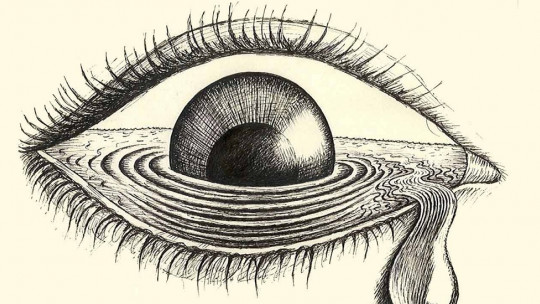
In recent years, the suicide rate has increased significantly in several countries around the world ; However, for many people this remains a taboo topic and they are not informed or know how to identify warning signs, therefore, the possibility of preventing it is complicated.
This is related to the lack of sensitivity that exists in many countries about mental health, since many times suicide is one of the consequences of suffering from a mental disorder that was not treated adequately, or that was never treated at all.
Suicidal ideation is something that anyone can experience, and that is why it is important that we know about the subject, know what is true about suicide and what are myths, and how to help a person we know who is going through a difficult time and have suicidal ideation or attempts.
Characteristics of suicide
The main common characteristics of suicide are the following.
1. Stimulus
What leads a person to commit it is usually unbearable psychological pain
2. Purpose
The purpose is to find a solution to the pain you feel.
3. Emotion
Person You may experience various emotions such as shame, guilt, and hopelessness
4. Internal attitude
In many cases, the individual presents a feeling of ambivalence regarding the fact, on the one hand, they want to die to end that pain but on the other they hope to be rescued; a struggle between our life drive and our death drive.
5. Goal
Similar to the purpose, The goal is to end the self-consciousness that carries all the psychological pain
6. Cognitive state
The person is in a state of constriction in which they see suicide as the only option and can hardly see other alternatives to achieve the goal.
Suicide prevention: risk signs
Each person can express or communicate their suicidal ideation in their own way, whether verbal or non-verbal. It can be easy to recognize him when he openly says phrases like “I’m good for nothing,” “I don’t want to live anymore,” “everyone would be better off if I die,” “my life has no meaning,” among others; however, There are signs that are not so easy to identify and can go unnoticed such as the fact that the person becomes more apathetic, that he begins to make specific arrangements to leave his things “in order”, that he has irregular sleeping patterns, that he gets rid of belongings that he values, or that he presents a depressed mood.
When a psychological intervention is carried out with a patient who has suicidal ideation and/or who has had attempts to end his or her life, it will be important to begin investigating using words or terms that have been said by the patient himself, to prevent him from feeling judged or from making incorrect interpretations of the situation.
In these cases, psychologists ask neutral questions preventing them from being critical or judgmental With this you can establish a trusting patient-therapist relationship, since you will not feel judged and you will know that the therapist is really interested in helping you.
Protocol to evaluate suicidal ideation
To evaluate the danger, it will be important to take into account 3 variables:
1. Plan
How far has the idea gone? It is evaluated whether you have the means to carry it out or what the difficulty or ease of achieving them is.
2. History of previous attempts
The aim is to know how many there have been, how they have happened and how they have turned out; With each attempt the chance of success increases
3. Willingness to use external auxiliaries
Lonely patients are often at higher risk, since there is no one who can support containment; If the patient is reluctant to ask for help, a contingency plan should be devised.
The objective is to be able to gain time to ensure the well-being of the patient and that an agreement can be reached with him.
Myths about this topic
Although some ideas about suicide have already been changed, There are still some myths that can make it difficult or impossible to prevent it These are the following false ideas.
Suicide attempts are a manifestation of despair, frustration and psychological pain ; The fact that someone commits suicide does not mean that they are selfish or brave, but rather it reflects a person with a very high level of suffering. Normally people “warn” or transmit in a certain way their desire to die, although unfortunately we do not always perceive it and we do not know how to read the signals they give us.
The publication of responsible and accurate information in the media is a very useful prevention tool, because yes, suicide is preventable.








